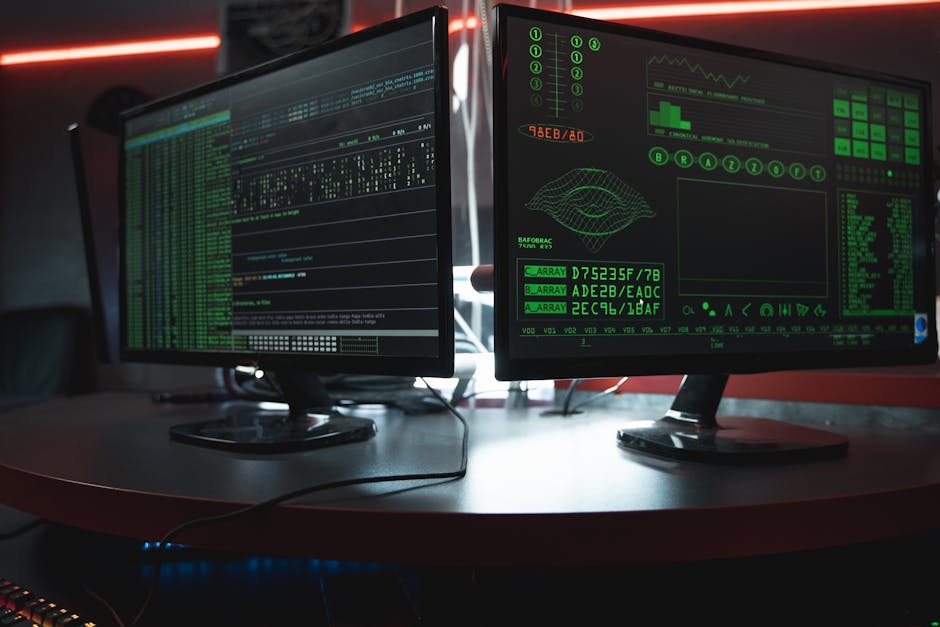Top Cybersecurity Threats and How to Protect Yourself

Cybersecurity threats are becoming increasingly sophisticated and pervasive, impacting individuals and organizations alike. From phishing attacks to ransomware, the digital landscape is rife with potential dangers. Understanding these threats and knowing how to protect oneself is crucial for maintaining security in our digital lives. This article provides a detailed overview of the top cybersecurity threats and practical measures to safeguard against them.
Phishing Attacks
Phishing attacks remain one of the most common cybersecurity threats. These attacks involve cybercriminals sending deceptive emails that appear legitimate, aiming to trick recipients into providing sensitive information such as passwords or credit card numbers. According to a report by the Anti-Phishing Working Group, phishing attacks have seen a significant increase, with over 600,000 attacks recorded in 2020 alone.
Phishing emails often mimic reputable companies or even personal contacts, making them difficult to identify. They may include links to fake websites that capture login credentials or attachments that install malware on the victim's device. The consequences of falling for a phishing scam can be severe, including identity theft and financial loss.
To protect against phishing, it is essential to verify the sender's email address and look for signs of suspicious activity, such as unexpected requests for personal information. Using email filtering tools and educating oneself on common phishing tactics can also help mitigate this threat.
Ransomware
Ransomware is another prevalent threat, where malicious software encrypts the victim's data and demands payment for its release. High-profile ransomware attacks have targeted hospitals, corporations, and even city governments, causing significant disruptions and financial damage. For instance, the WannaCry ransomware attack in 2017 affected more than 200,000 computers across 150 countries.
Ransomware typically spreads through infected email attachments or compromised websites. Once installed, it locks access to files and displays a ransom note demanding payment in cryptocurrency. Paying the ransom does not guarantee data recovery and may encourage further criminal activity.
Preventing ransomware involves maintaining up-to-date backups of important data, using robust antivirus software, and avoiding suspicious downloads or email attachments. Regularly updating software and operating systems can also close vulnerabilities that ransomware exploits.
Social Engineering
Social engineering exploits human psychology rather than technical vulnerabilities to gain access to sensitive information. Tactics include impersonating trusted individuals or manipulating victims into performing actions that compromise their security. According to a study by Proofpoint, social engineering accounted for 98% of cyberattacks in 2020.
Common social engineering techniques include pretexting (creating a fabricated scenario to obtain information), baiting (offering something enticing to get victims to divulge information), and tailgating (gaining physical access by following someone into a restricted area). These methods rely on trust and deception rather than technical hacking skills.
Countering social engineering requires a combination of awareness and skepticism. Training programs that simulate social engineering attacks can help individuals recognize and respond appropriately to such threats. Verifying identities before sharing sensitive information is also crucial.
Malware
Malware encompasses various types of malicious software designed to harm or exploit devices and networks. This includes viruses, worms, Trojans, spyware, and adware. Malware can lead to data theft, system damage, and unauthorized access to personal or corporate networks.
The methods of malware distribution are diverse; it can be delivered through email attachments, compromised websites, removable media like USB drives, or even via infected software downloads. A notable example is the Stuxnet worm, which targeted industrial control systems and caused significant damage to Iran's nuclear program in 2010.
To defend against malware, it is crucial to use comprehensive antivirus software that includes real-time protection features. Regular system scans, avoiding untrusted downloads, and keeping software up-to-date are additional preventive measures.
| Cybersecurity Threat | Description | Prevention Tips |
|---|---|---|
| Phishing | Deceptive emails designed to steal sensitive information. | Verify senders; use email filters; educate on phishing tactics. |
| Ransomware | Malicious software that encrypts data for ransom. | Maintain backups; use antivirus software; avoid suspicious downloads. |
| Social Engineering | Psychological manipulation to obtain confidential information. | Awareness training; verify identities; be skeptical of unusual requests. |
| Malware | Various malicious software that harms or exploits devices. | Use antivirus software; regular scans; update systems regularly. |
The cybersecurity landscape presents numerous challenges for individuals aiming to protect themselves from various threats like phishing attacks, ransomware, social engineering, and malware. Each type of threat requires specific strategies and tools to effectively counteract potential damages. By staying informed about these risks and implementing preventive measures such as verifying email senders or maintaining up-to-date backups of important data, individuals can significantly reduce their vulnerability.
The importance of continuous education and vigilance cannot be overstated when dealing with cybersecurity threats. As attackers constantly develop new methods to bypass defenses, it becomes essential for users to adapt their protective measures accordingly. With proper awareness and proactive steps like utilizing robust antivirus programs and participating in security training programs focused on real-world scenarios involving social engineering techniques among others mentioned here today – everyone stands a better chance at navigating this complex domain safely.
